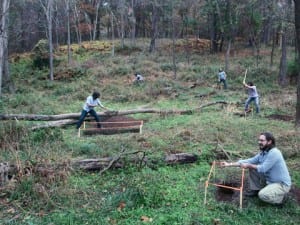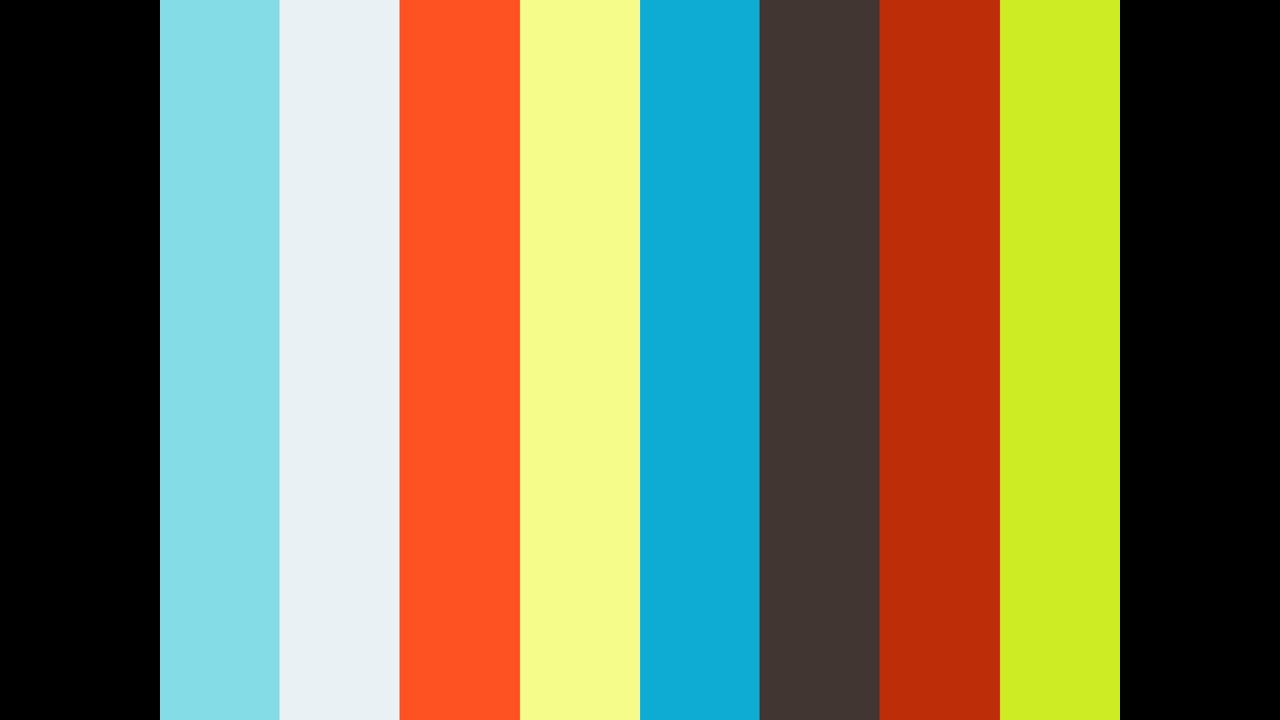Stones against diamonds (ice cave), Isaac Julien’s 2015 film, would also be a good concept for a fashion shoot. It is set in an environment where water curls slowly around smooth pillows of ice. A woman with a shaved head and a serious face wanders through a glacial cave out onto a beach of black sand studded with stones and ice chunks. The camera drifts slowly over these obstacles, following her at a respectful distance, focusing first on the impressions her form-fitting rubber shoes leave in the sand and then on her eyes, lined with blue eyeshadow. She moves like a stream, and her black gauzy dress billows out behind her. The film’s sound does not come not from her movements, but it matches the affect she projects with glassy, smooth notes. In each of the pieces in Human Ecology, humans reflect their environment in specific and condensed gestures.
As the sound picks up speed in the film, so too does the pace of cutting. Quick pans over snow and ice read as bodily — here are smooth and gentle hills, finely distributed striations, and muscular arrangements of grooves. Though the overall tone of the piece is blue and cool, these shots feel interior, perhaps warm and bodily. These scenes are closest to the psychological dimension Julien desired when he based the film off of “a metaphor for the unconscious, an inaccessible place of beauty.” The film is indeed beautiful, and does feel as glamorous as the diamonds Julien references from a letter written by architect Lina Bo Bardi to her husband.
Bo Bardi’s influence is most directly felt in the ensuing scenes, where stone easels holding glass panes reflect both the surrounding ice cave and Bo Bardi’s iconic contribution to design. The television on which this film plays is also held up by a stone easel, but in the film, the glass panes waver slightly; this doubling lends a sense of instability to this gallery presentation and to the materials typically associated with stability. Another Bo Bardi reference might be the rusty iron staircase, visually similar to some of Bo Bardi’s constructions, which the woman in the film ascends in her black dress but descends in a white gown. She seems to have achieved some higher state of being in her ascension, a transformation that may be a result of the aforementioned “artistic reflection” on Bo Bardi’s work. These structures do seem to fit into Julien’s landscape, but something about the film’s glossiness prohibits deep contemplation of the state of the unconscious.
In a similarly literal reflection of the landscape, Eduardo Navarro displays the five performers’ costumes from his Instructions from the Sky performance at Frieze, New York. On the lawn at Frieze, performers were told to echo the movements of the clouds in their configurations. Here in the gallery, on the floor, wood pieces resembling Bo Bardi’s stone easels hold up the five doughnut-shaped mirrors that were worn around the waist. On a shelf are the five headpieces made of a sky-facing mirror and fabric. The transmission of environmental stimuli into corporeal movements feels like an extension of Julien’s film. Yet here, presented as artifacts of a performance that will unlikely be performed again, these costumes mirror only each other and thus feel claustrophobically self-referential rather than expansive and outward-looking.
Lucia Koch’s Air temperature prints on silk and rayon similarly translate external phenomena into a set of instructions. The gradients of purple through red to yellow and dark green to light blue are mathematically created from images of sunrises Koch has seen in various points around the globe. A place is again transmitted through a material. The exact locations of these sunsets are apparently unimportant to Koch, just as the exact location of Julien’s landscape is left ambiguous. For a viewer who was not witness to the sunsets, this detachment of location from material is a bit disappointing.
However, Koch’s choice of curtains as a final material does move the conversation towards a domestic space. Moving through the spaces implied by the remaining works in the show, it soon becomes clear that interiority is a vital aspect of human considerations of the environment. Koch’s other work in the show, Amostras da Arquitetura [Architectural Samples], is a photograph of the inside of a cardboard box. Interiority is successfully communicated as a counterweight to the openness of the sky or the glacial scape: here is a space that might be familiar, habitable and accessible. Three holes are cut into the roof of the box so that trios of spotlights are projected inside. From Koch’s vantage point, it appears as though this box is actually a room in which the photographer is standing. It is easy to imagine another breezily dressed model passing through.
Nearby, Navarro’s Oven Session Drawings illustrate objects from Navarro’s studio through a process of drawing in sugar and water before baking the paper in an oven. These works are charmingly awkward, conveying a sense of warmth in their imperfect representations of scissors, hands and tools. Touch and intimacy are vital aspects of domesticity, and Navarro and Koch’s interventions ultimately seem to be the most successful studies of human ecology.
Mira Dayal
Human Ecology ran from 13 July – 10 September at Galeria Nara Roesler, New York. www.nararoesler.com.br
Credits:
1. Photos adam reich © galeria nara roesler.





